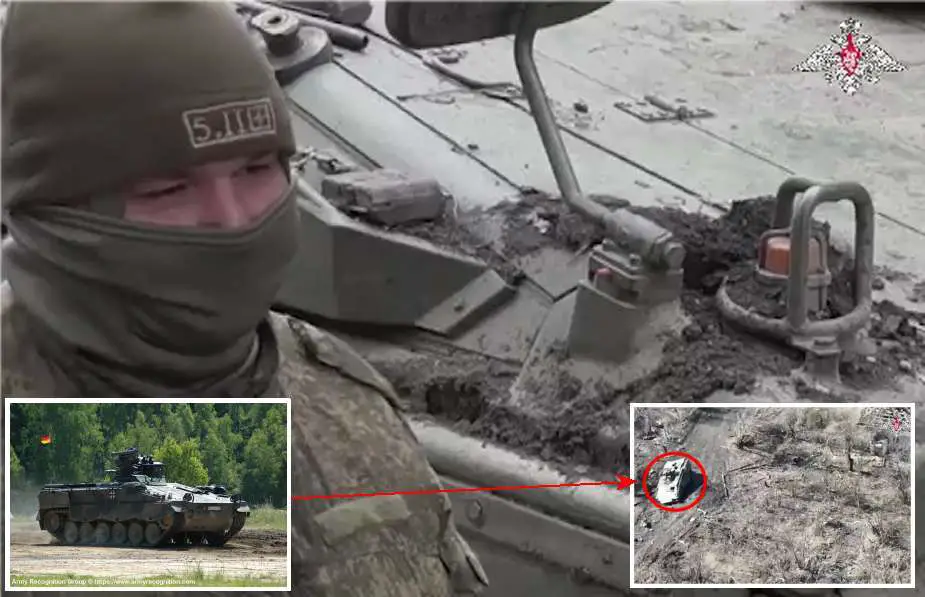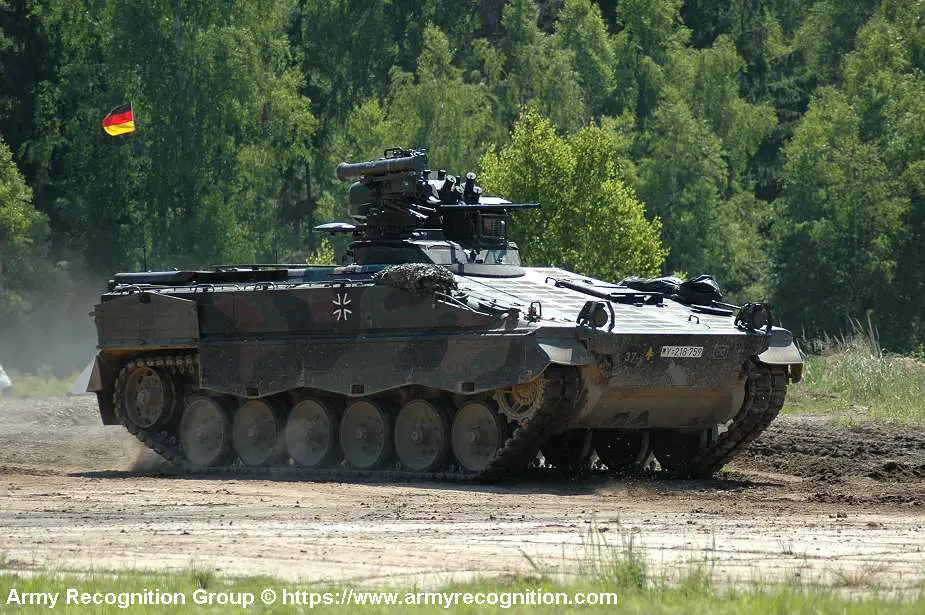According to a video released by the Russian Ministry of Defense on March 26, 2024, Russian forces achieved a strategic milestone by evacuating a German-donated Marder 1A3 Infantry Fighting Vehicle, previously utilized by the Ukrainian military, from the front lines. This operation is of paramount importance for the Russian armed forces, as capturing European combat vehicles donated to Ukraine offers a unique opportunity to scrutinize advanced Western military technology.
Follow Army Recognition on Google News at this link

Russia captured the German-donated Marder 1A3 IFV Infantry Fighting Vehicle abandoned by Ukrainian soldiers. (Picture source Russian MoD video footage)
The capture of such combat vehicle as the German-made Marder 1A3 IFV (Infantry Fighting Vehicle) not only allows Russian military analysts to study the technological advancements and combat capabilities of NATO-standard equipment but also serves as a psychological boost, demonstrating their ability to capture and repurpose the very assets intended to strengthen their adversary. The capture of the Marder 1A3, a symbol of Western support for Ukraine, thus holds both tactical and symbolic significance, potentially impacting the strategic calculations on both sides of the conflict.
The Marder 1A3, hailed for its robust design and advanced combat capabilities, unfortunately, fell victim to the muddy and unforgiving terrain of the region, rendering it immobile and forcing the Ukrainian forces to abandon it. The Russian Ministry described the vehicle's inability to reach its target due to the "sticky Russian soils," which compromised its mobility.
The evacuation operation was meticulously planned and executed under the cover of darkness by the 1st AK "Southern" group of Russian forces. Before the recovery, a comprehensive reconnaissance mission was conducted to assess the area. Russian engineers played a pivotal role in paving a new route to the stranded vehicle, clearing minefields, and ensuring a stealthy approach to the site for the evacuation team.
The Marder 1A3 infantry fighting vehicle represents a significant leap in military vehicle technology, particularly when its features are compared to the Russian BMP-1 and BMP-2 IFVs in terms of protection, firepower, and mobility. According to information published by the German Ministry of Defense, 90 Infantry Fighting Vehicles Marder 1A3 with ammunition and spare parts coming from Bundeswehr (German army) and industry stocks have already been delivered to the Ukrainian army.
In the aspect of protection, the Marder 1A3 showcases a robust upgrade over its predecessors. Its armor is specifically engineered to offer superior protection against kinetic energy projectiles, shell splinters, and provides enhanced resistance against mines and improvised explosive devices (IEDs). This is a critical advancement, considering the evolving threats on modern battlefields. Additionally, the vehicle incorporates advanced nuclear, biological, and chemical (NBC) protection systems, safeguarding the crew and passengers against a range of unconventional threats that the BMP-1 and BMP-2's older systems might not fully mitigate.

The Marder 1A3 is a German-made tracked armored IFV Infantry Fighting Vehicle that continues to be in service with the German army. (Picture source Army Recognition Group)
In terms of firepower, the Marder 1A3 is armed with a highly capable 20mm automatic cannon, which is versatile enough to engage both ground and low-flying aerial targets effectively. This is complemented by advanced fire control systems that ensure high accuracy and efficiency in target engagement, a notable improvement over the armament and targeting capabilities of the BMP series. The integration of modern optics and targeting systems allows the Marder 1A3 crew to detect, track, and engage enemies with precision, even on the move.
Mobility is another domain where the Marder 1A3 excels. Despite its focus on robust armor and advanced weaponry, the vehicle does not sacrifice speed and maneuverability. Powered by a potent engine and equipped with a sophisticated suspension system, the Marder 1A3 can traverse challenging terrains that would be difficult for the older BMP models. Although it may lack the amphibious capabilities of the BMP-1 and BMP-2 IFVs, its land mobility and durability in harsh environments ensure that it can rapidly respond to various tactical situations, maintaining its operational effectiveness across a wide range of combat scenarios.
Overall, the Marder 1A3's integration of advanced protection, superior firepower, and enhanced mobility features mark it as a formidable presence on the battlefield, offering a significant technological edge over the earlier generation Russian BMP-1 and BMP-2 infantry fighting vehicles.
The successful operation by Russian forces to evacuate a German-donated Marder 1A3 Infantry Fighting Vehicle from the Ukrainian military represents a significant achievement with multiple layers of strategic and tactical benefits. Primarily, this event grants Russian military analysts and engineers an invaluable opportunity to closely examine advanced Western military technologies. The insights gained from studying the Marder 1A3 could reveal critical aspects of NATO's defense capabilities, vehicle design principles, and cutting-edge technologies. Such knowledge not only aids in countermeasure development but also enhances Russia's own defense manufacturing and operational tactics against similar technologies in future engagements.
Furthermore, the capture of a high-profile and modern piece of military equipment like the Marder 1A3 serves as a psychological boost to the Russian military while potentially undermining the morale of Ukrainian forces and their Western allies. It highlights the vulnerabilities in the deployment and operational strategies of Ukraine and its supporting nations, showcasing the ability of Russian forces to capture and repurpose what is considered a significant asset to the Ukrainian defense effort. This event could influence the tactical calculations on both sides, affecting the dynamics of military engagements and potentially leading to strategic reassessments by Ukraine and its allies regarding the deployment of advanced Western military equipment in the conflict zone.
News Russia Ukraine War















